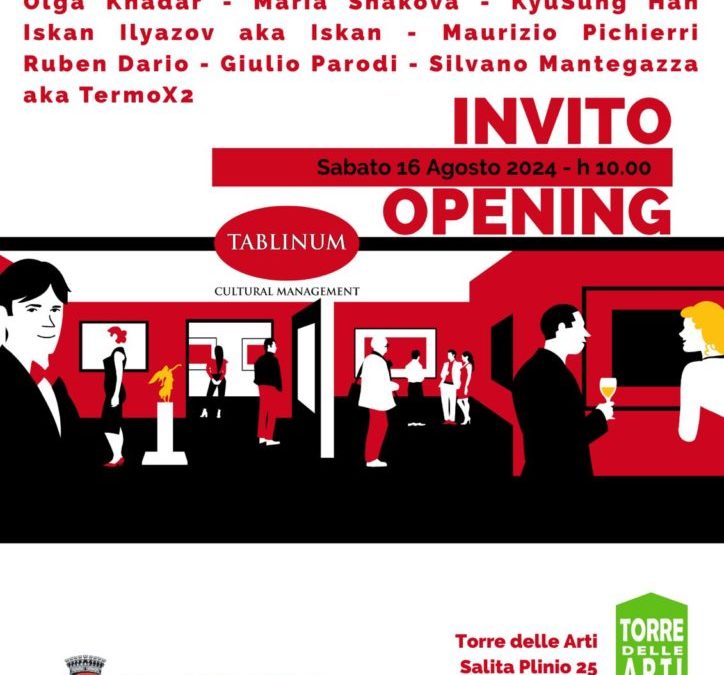This post is also available in:

“The universe appears as a visual symphony,
where every form is a sign and every color a vibration.
Art and science act as complementary instruments
to explore the enigma of existence.”
Elisa Larese Moro
In Giulio Parodi’s vision, the universe is not a silent void, but a vast visual score where every form is a symbol, every color a vibration, every detail a story that reaches beyond the visible. His work unfolds on the fascinating frontier of fractal art—where mathematics meets aesthetics, and repetition becomes revelation.
Through generative algorithms and a refined compositional sensitivity, Parodi guides us through landscapes that are both interior and cosmic, where infinity takes shape and complexity transforms into poetry. His works are not mere digital constructions: they are meditative visions born from a silent dialogue between logic and intuition, between calculation and chaos.
In Fractal Cathedral, the artist constructs a scenography that recalls sacred architecture—evoking a cathedral not built by human hands, but generated by equations and natural symmetries. A central eight-pointed form dominates the composition, resembling a stellar mandala or an alien Gothic rose window. Here, mathematical precision is transfigured into mystical contemplation: the algorithm becomes prayer, and light becomes knowledge. The cool tones—between steel blue and metallic grey—suspend time and space, as though we have entered an alternate dimension where the mind can lose and rediscover itself.
With Under a Starry Sky, Parodi pays homage to and transcends a canonical reference. If Van Gogh painted the turbulence of the sky with soul-laden gestures, this digital artist reinterprets that same celestial unrest through the codes of modernity: fractal vortices, luminous overlays, chromatic combinations that merge the warmth of dawn with the depth of night. The result is a dreamlike landscape—halfway between microchip and mythology—where stars pulse like thoughts and towers float like archetypes.
Despite his young age, Giulio Parodi’s artistic path stands out for its coherence, intensity, and surprising visual maturity. His is a research practice that challenges disciplinary boundaries: art and science are not opposites, but complementary tools for investigating the enigma of existence. Each image is an open window onto the infinite, a map of the invisible that invites us to reflect on the relationship between order and chaos, perception and reality, humanity and the cosmos.
Exhibiting at the Torre delle Arti in Bellagio marks a symbolic milestone in his journey—a place suspended between history and landscape, between lake and sky—that perfectly lends itself to hosting a vision as intimate as it is cosmic.
Critical text by Elisa Larese Moro, art historian
Giulio Parodi (b. 2002, Savona, Italy) is a visual artist whose research focuses on fractal art and digital experimentation, blending scientific rigor, aesthetic intuition, and contemplative depth. Drawn from an early age to drawing and geometric forms, he found in generative art the ideal language to explore the intersections between mathematics, perception, and imagination.
After embarking on a personal path of research, Parodi developed a distinctive visual style in which complex algorithms are transformed into images of striking visual and emotional impact. His works are not mere digital renderings, but true “mental maps,” where chaos organizes itself into harmony and fractal repetition becomes a metaphor for the infinitely large and the infinitely small.
His artistic production is marked by a meticulous approach to composition and color, tools with which he constructs abstract landscapes, visionary architectures, and cosmic skies—evoking both futuristic worlds and inner dimensions. His work is deeply influenced by the idea of art as a bridge between science and spirituality, where computational data is transfigured into poetic form.
Since 2023, Giulio Parodi has participated in major art exhibitions and fairs in Italy and abroad, including ArteGenova 2024 and 2025 and Art Capital 2025 at the Grand Palais in Paris. His work has been praised by both critics and audiences for the consistency of his vision and the originality of his language.
He currently lives and works between Liguria and Northern Italy, engaged in an ongoing process of technical and conceptual exploration, with the aim of giving visual form to the invisible and offering, through art, an experience of contemplation and wonder.
OPERE:
Fractal Cathedral
The artwork presents a complex symmetrical architecture, dominated by cool tones ranging from steel blue to metallic grey. At its center, an eight-pointed floral shape evokes the image of a mandala or a Gothic stained-glass window, suggesting a sense of the sacred. Fractal structures radiate in all directions, like an organic network pulsing beneath an ordered surface. The overall impression is that of being inside an alien cathedral, where mathematics meets spirituality. A perfect balance between computational rigor and mystical suggestion.
Under a Starry Sky
This second work clearly draws inspiration from Van Gogh’s cosmic language, but reimagines it through a fractal aesthetic. Swirls of light intertwine in a hyper-detailed sky, dotted with suns and stars that appear to shimmer. Sinuous lines create a sense of continuous, almost musical movement, while the landscape below emerges as a dreamlike expanse of stylized hills and towers. The warm hues of dawn blend with the deep blues of night, generating a liminal and dreamlike vision—suspended between microcosm and macrocosm.

